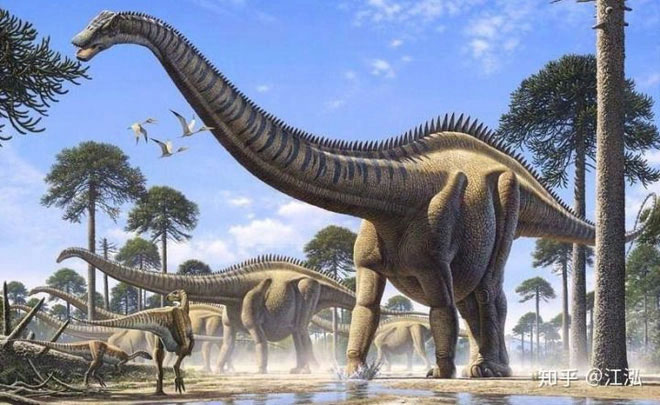The title of the longest dinosaur in the world may belong to the Supersaurus – a herbivorous dinosaur that lived approximately 150 million years ago during the Jurassic period.
Based on fossil studies of the Supersaurus, Brian Curtice, a paleontologist at the Arizona Museum of Natural History, states that the length of an adult Supersaurus could reach up to 39 meters, and even 42 meters from snout to tail.

A Supersaurus could be 3.5 times longer than a Tyrannosaurus.
In comparison, we have the Tyrannosaurus, also known as the tyrant lizard king – one of the largest carnivorous animals of all time, but it is only about 12 meters long based on discovered specimens. Thus, a Supersaurus could be 3.5 times longer than a Tyrannosaurus and twice as tall.
To make this discovery, Curtice relied on fossilized bone samples of the Supersaurus first discovered in 1972. However, due to the fragmented nature of these specimens, accurately estimating their length has been a challenge.
This dinosaur is believed to be longer than other related species such as the Diplodocus, which holds a record length of 33 meters according to a 2006 study.

Comparing the size of a Supersaurus with a human.
Since the first discovery, paleontologists have only identified two parts of the fossil skeleton believed to belong to the Supersaurus – including a specimen nicknamed “Jimbo” and another named “Goliath” – found in the state of Wyoming, USA.
Interestingly, while the Supersaurus may be recognized as the longest dinosaur, it is not the heaviest. That honor belongs to the Argentinosaurus, which weighed up to 90 tons, nearly double that of an adult Supersaurus.
Meanwhile, the longest recorded prehistoric creature is not even a dinosaur. This title belongs to a siphonophore measuring up to 45 meters in length. This transparent, tubular creature has tentacles similar to corals and lives deep on the ocean floor off the coast of Australia.


















































